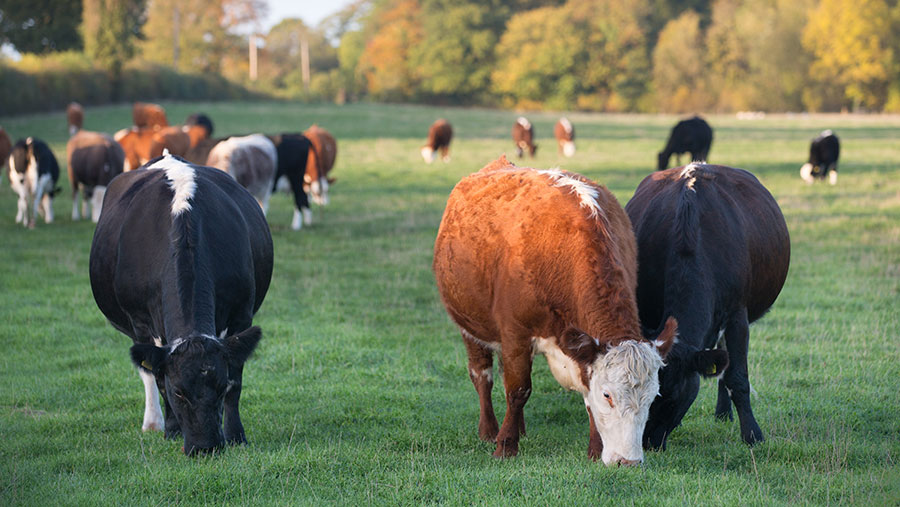Bovine TB cattle slaughterings down 20% in England
 © Tim Scrivener
© Tim Scrivener New figures show bovine TB rates and cattle slaughterings continue to fall across England and Wales.
The number culled in England due to bovine TB has fallen by 20% on the year, according to the latest official government data.
Figures published by Defra on 14 September showed 24,398 TB-infected cattle were slaughtered between July 2021 and June 2022. This compares with 30,347 TB-condemned cattle in the previous 12 months. Fewer animals were slaughtered in all risk areas.
See also: 5 ways to improve TB control in the UK
Wales recorded a 16% year-on-year fall in TB cattle slaughterings over the 12 months to June 2022 – 9,713 cases compared with 11,536. All areas except the Low-TB Area (north-west Wales, including Anglesey) showed decreases.
In Scotland, 311 TB-infected cattle were slaughtered (down 29% on the year) after record highs in 2021. Scotland retains its officially TB-free status.
Meanwhile, the number of new TB herd incidents recorded in England in June 2022 was down by 18% on the year (from 1,781 to 1,458 cases).
Wales also recorded a drop, of 5%, over this same period (down from 332 to 316 cases).
Control measures
Defra is using a robust set of measures to reduce the risk of bovine TB transmission between cattle herds, as part of its 25-year science-led strategy to eradicate the disease in England by 2038.
This includes compulsory testing, slaughter of infected animals, strict cattle measures, and badger vaccination and culling.
In Wales, the Welsh government has adopted similar measures to England. However, the Labour-led administration remains strongly opposed to badger culling.
Field trials of a BCG cattle vaccine and a complementary skin test to differentiate infected from uninfected vaccinated animals are under way in England and Wales.
Defra hopes to roll out TB vaccination in cattle herds in 2025, and that the badger cull phase of the strategy would then wind down.
NFU reaction
Commenting on the latest TB statistics, NFU deputy president Tom Bradshaw said it was encouraging that the number of TB cattle slaughtered in England has declined in the past year, but there is still much work to be done to reach the goal of a TB-free England.
He added: “This reduction does show that over the past 10 years, the government’s TB eradication strategy has clearly been successful in driving a reduction in bovine TB.
“Farmers having access to all available measures to tackle this disease, whether that is wildlife control, stringent biosecurity or enhanced testing, has delivered reductions.
“It is now essential that we have a clear and detailed plan in place for the next stage of the eradication strategy, to protect and enhance this progress. We believe that the government should focus its TB eradication strategy around the science and evidence, which shows that all of these measures are crucial to fighting this horrendous disease.”
Farmer reaction
Cheshire dairy farmer Phil Latham, who is also a panel member of the government’s Bovine TB Partnership, said the results for England in particular were very encouraging.
“Even though the efforts of TB testing of cattle has gone up, the numbers of slaughterings have come down.
“This is despite increased surveillance and a wider use of gamma and more repeated and prolific use of skin testing.
“There should be no doubt in anybody’s mind that farmer-led culling to correct the system failure of previous decades of control has been a tremendous success.”
But he added: “There is danger that we will give up on the current strategy without a proven, evidence-led base for development of an alternative strategy, which is driven more by politics than epidemiology.”
